About This Rava Dhokla
This recipe I learned when I was working in a school. The teacher colleagues were discussing on how to make this recipe of rava dhokla. When they were talking, my mind was registering all the details of this dish. When I went home, I told my mom the whole method and she made it the very next day. It was hit in our home and till today mom makes rava dhokla often. The recipe which we would make used curd (yogurt) or buttermilk. But this suji ka dhokla recipe is made with lemon juice and water. This combination of lemon juice and water works like a charm. You will not notice any difference in the taste of the rava dhokla made with yogurt and this one. This is an easy, quick and delicious dhokla variety and does not require fermentation. I have steamed the suji dhokla in an electric cooker. A dhokla steamer or even a stovetop pressure cooker or Instant pot or a saucepan also works well for steaming. You can also make it in a microwave. I suggest using eno or fruit salt to make the batter airy and light. I don’t add baking soda as a leavening ingredient, since I don’t like the soapy odour of it. However, if you cannot get eno or fruit salt, then use baking soda instead. This is a quick tasty snack option and goes best with coriander chutney or papaya sambharo or mint-coriander chutney or mint chutney or any green chutney of your choice.
How to make Rava Dhokla
Making Batter
1. In a mixing bowl take the below-mentioned ingredients and mix them thoroughly with a spoon.
1 cup rava/semolina (use fine variety of suji and not the coarser variety) ginger-chili paste (½ inch ginger + 1 green chili – crushed and made into a paste in a mortar-pestle) 1 tablespoon or 1.25 tablespoon lemon juice ½ teaspoon sugar salt as required ½ cup water or as required.
Don’t add the fruit salt (eno) at this step. Keep aside for 15 to 20 minutes. The batter has to be slightly thicker than the Idli Batter. NOTE 1: Don’t make the batter thin or very thick. As this will change the texture of the suji dhokla. NOTE 2: Keep in mind that depending on the texture of your rava, you may need to add more water. 2. While the batter is resting and before you add eno to the batter, prepare your pans for steaming. First grease a steaming shallow pan with oil and set aside. Next in a pot or a saucepan take 2 cups of water. Place a small trivet in the saucepan inside the water. Bring this water to a gentle boil on medium heat. Then add 1 teaspoon eno or fruit salt. The addition of eno helps in leavening the batter and gives a soft fluffy texture to the suji dhokla. 3. Stir briskly and be quick to mix. Make sure the fruit salt is distributed evenly in the batter. However, don’t overdo the mixing as you don’t want the air bubbles to escape from the batter. 4. Quickly pour the batter into the prepared greased pan. So before you make the batter grease a steaming pan very well with oil as I have mentioned above.
Steaming Suji Ka Dhokla
5. Spread the batter in the pan with a spoon. Then shake the pan to even out the batter. Place the pan on the trivet on the saucepan. You can steam the rava dhokla mixture using a stovetop pressure cooker, an electric rice cooker or the Instant Pot. 6. Cover the saucepan or pan or steamer with a lid and steam for approx 15 to 20 minutes. I used an electric steamer and steamed it for exactly 20 minutes. Check with a toothpick to see the doneness and if the toothpick comes out clean and there is no sticky batter on it, then the rava dhokla is steamed well. Remove and allow to cool for 5 to 6 minutes.
Making Tempering
7. Here you have 2 options. You can add the tempering mixture directly to the steamed pan containing the rava dhokla. Or unmould the rava dhokla carefully on a serving plate and then slice and temper the slices. You can use any of the methods. To prepare tempering for dhokla, heat oil in a small pan. You can use peanut oil or any neutral-flavored oil. 8. First add the mustard seeds. Let them crackle. 9. Then add cumin seeds and allow them to splutter. Then add the asafoetida (hing), white sesame seeds and curry leaves and fry for some seconds. Switch off the heat. Add 2 to 3 tablespoons of water to the tempering. Be careful as the oil is hot and adding water would create a splurge. So add the water carefully and from a safe distance. 10. Pour the tempering mixture evenly over the sooji dhokla. 11. Top with some chopped coriander leaves or freshly grated coconut. Slice and serve warm or cool with a side chutney like green chutney or mint chutney or papapa chutney. It makes for a light and tasty evening snack. It can also be packed as a snack in a tiffin box for kids. Please be sure to rate the recipe in the recipe card or leave a comment below if you have made it. For more vegetarian inspirations, Sign Up for my emails or follow me on Instagram, Youtube, Facebook, Pinterest or Twitter. Khaman Dhokla Recipe (Spongy Khaman) White Dhokla | Khatta Dhokla Khandvi Recipe Handvo Recipe This Rava Dhokla post from the blog archives first published in September 2013 has been updated and republished on August 2021.
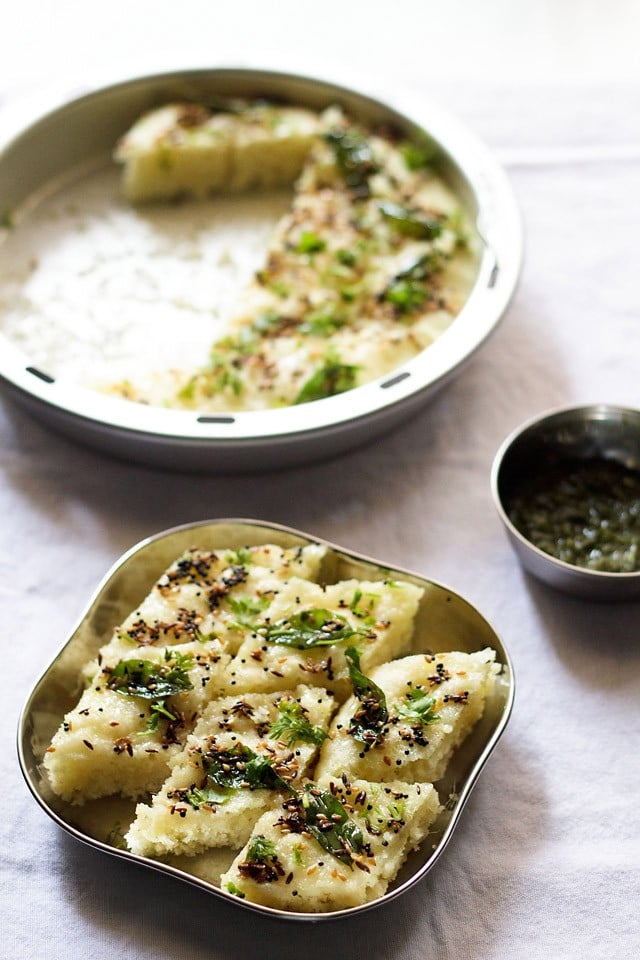
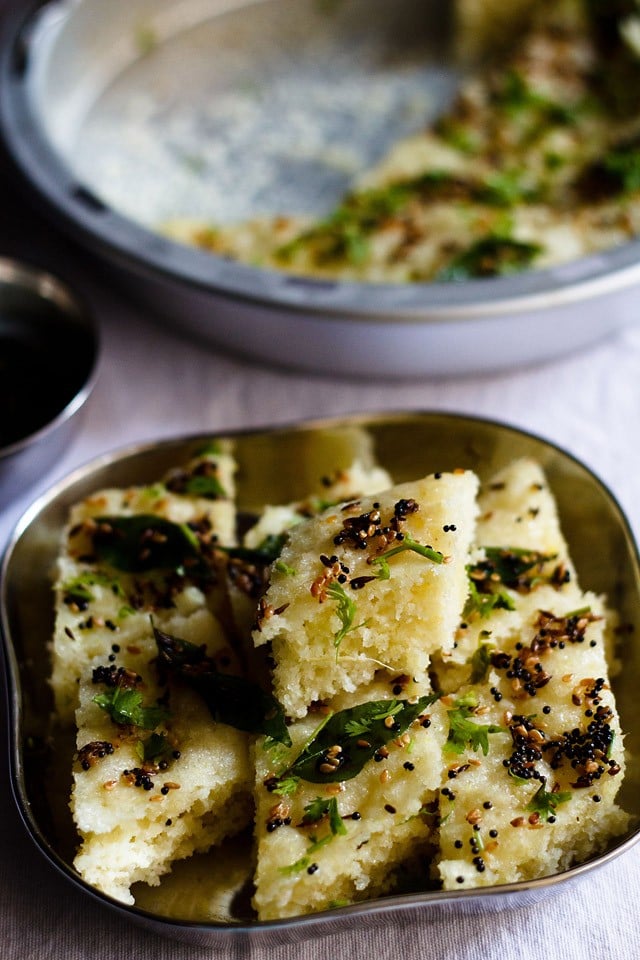
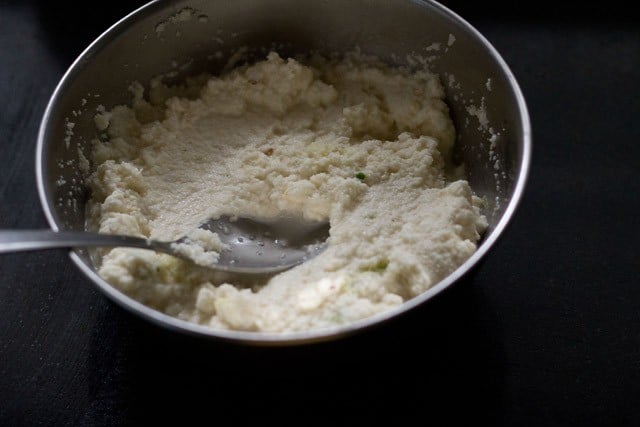
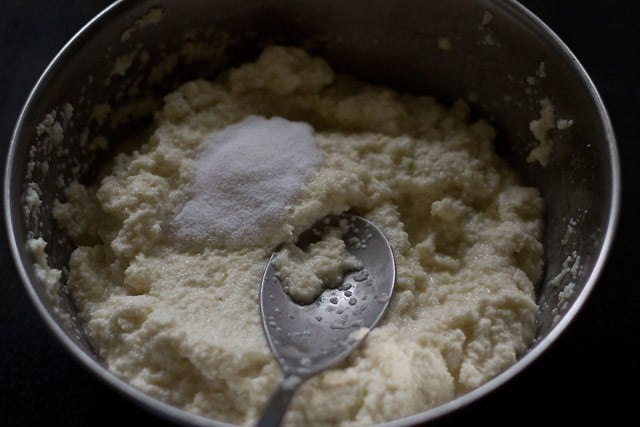
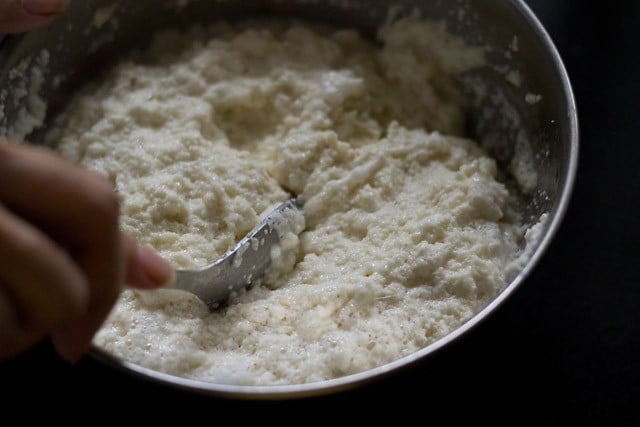
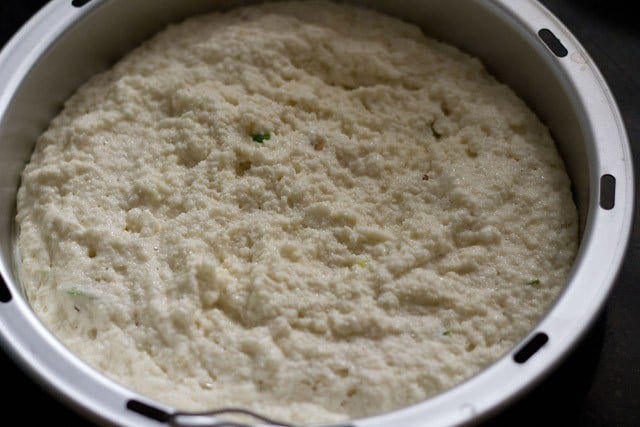
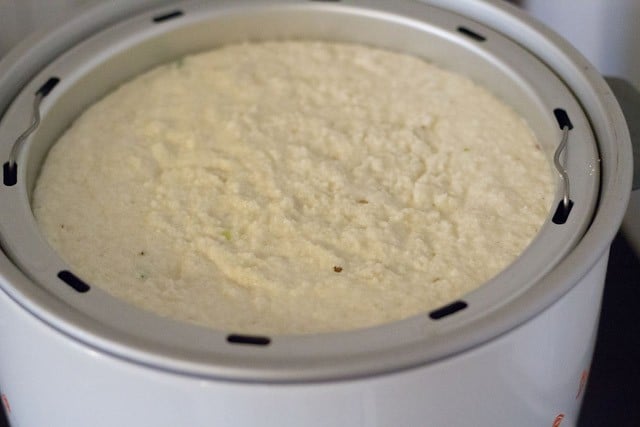
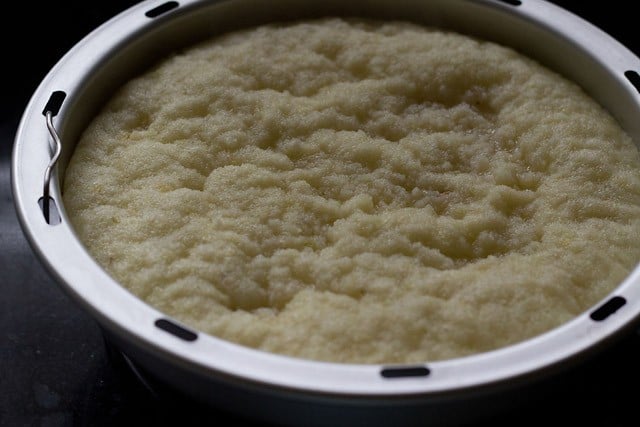
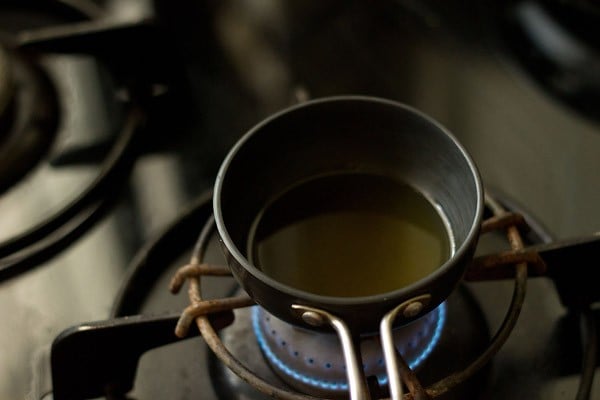
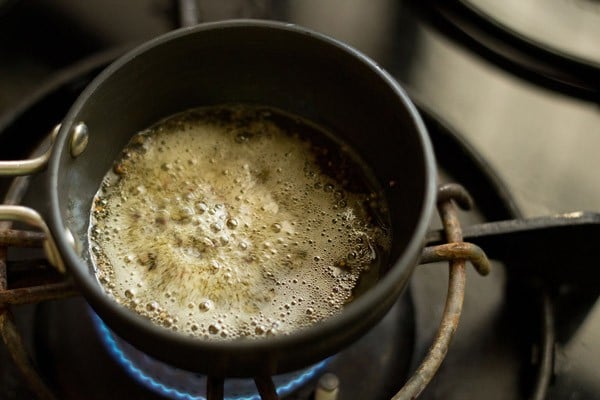
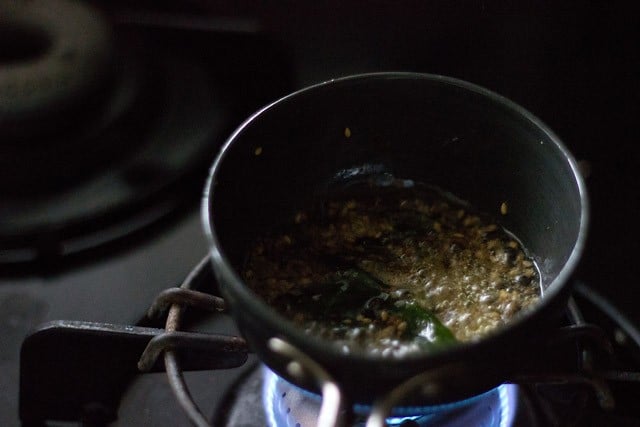
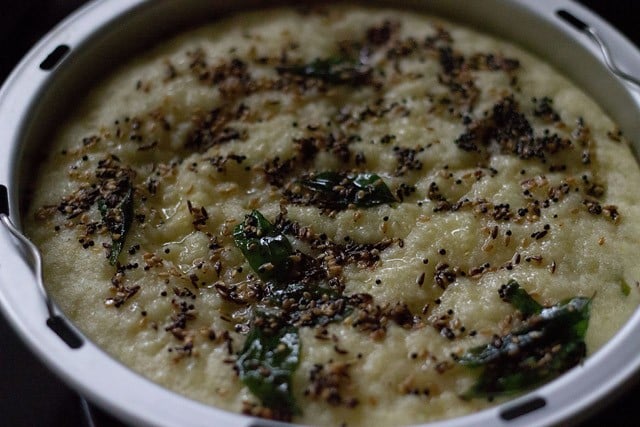
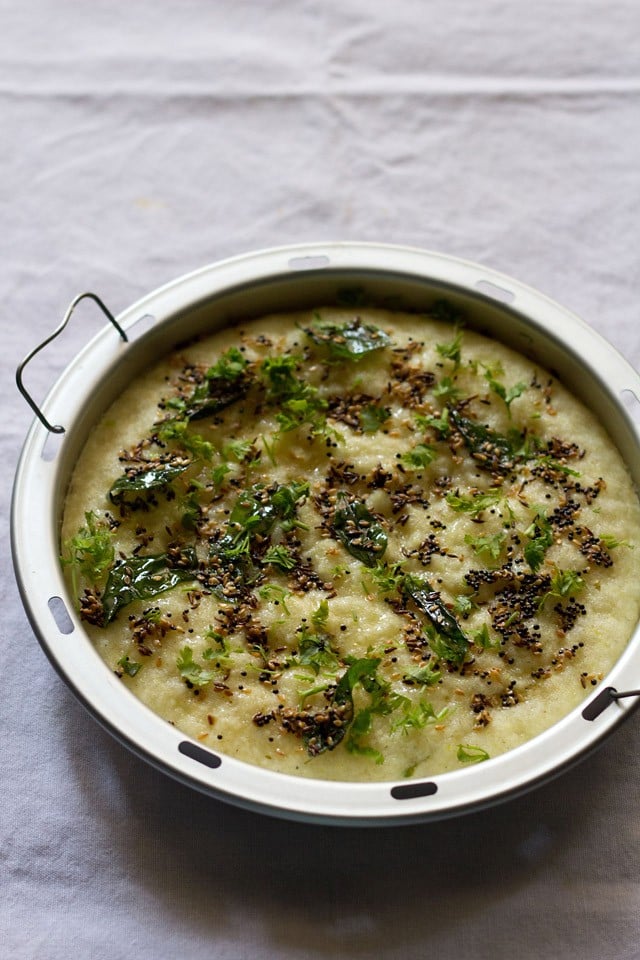
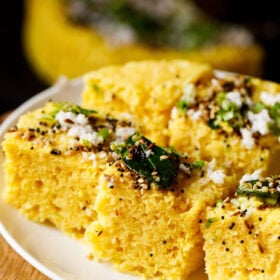
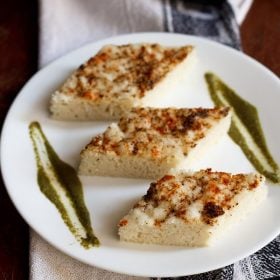
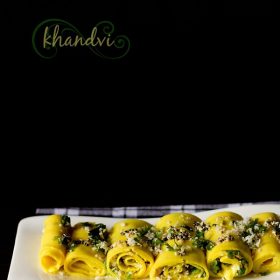
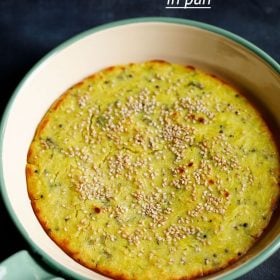
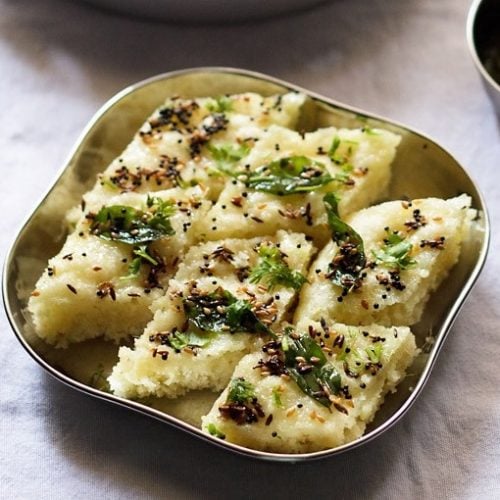
title: “Rava Dhokla Suji Ka Dhokla " ShowToc: true date: “2024-09-22” author: “Brent Aaron”
About This Rava Dhokla
This recipe I learned when I was working in a school. The teacher colleagues were discussing on how to make this recipe of rava dhokla. When they were talking, my mind was registering all the details of this dish. When I went home, I told my mom the whole method and she made it the very next day. It was hit in our home and till today mom makes rava dhokla often. The recipe which we would make used curd (yogurt) or buttermilk. But this suji ka dhokla recipe is made with lemon juice and water. This combination of lemon juice and water works like a charm. You will not notice any difference in the taste of the rava dhokla made with yogurt and this one. This is an easy, quick and delicious dhokla variety and does not require fermentation. I have steamed the suji dhokla in an electric cooker. A dhokla steamer or even a stovetop pressure cooker or Instant pot or a saucepan also works well for steaming. You can also make it in a microwave. I suggest using eno or fruit salt to make the batter airy and light. I don’t add baking soda as a leavening ingredient, since I don’t like the soapy odour of it. However, if you cannot get eno or fruit salt, then use baking soda instead. This is a quick tasty snack option and goes best with coriander chutney or papaya sambharo or mint-coriander chutney or mint chutney or any green chutney of your choice.
How to make Rava Dhokla
Making Batter
1. In a mixing bowl take the below-mentioned ingredients and mix them thoroughly with a spoon.
1 cup rava/semolina (use fine variety of suji and not the coarser variety) ginger-chili paste (½ inch ginger + 1 green chili – crushed and made into a paste in a mortar-pestle) 1 tablespoon or 1.25 tablespoon lemon juice ½ teaspoon sugar salt as required ½ cup water or as required.
Don’t add the fruit salt (eno) at this step. Keep aside for 15 to 20 minutes. The batter has to be slightly thicker than the Idli Batter. NOTE 1: Don’t make the batter thin or very thick. As this will change the texture of the suji dhokla. NOTE 2: Keep in mind that depending on the texture of your rava, you may need to add more water. 2. While the batter is resting and before you add eno to the batter, prepare your pans for steaming. First grease a steaming shallow pan with oil and set aside. Next in a pot or a saucepan take 2 cups of water. Place a small trivet in the saucepan inside the water. Bring this water to a gentle boil on medium heat. Then add 1 teaspoon eno or fruit salt. The addition of eno helps in leavening the batter and gives a soft fluffy texture to the suji dhokla. 3. Stir briskly and be quick to mix. Make sure the fruit salt is distributed evenly in the batter. However, don’t overdo the mixing as you don’t want the air bubbles to escape from the batter. 4. Quickly pour the batter into the prepared greased pan. So before you make the batter grease a steaming pan very well with oil as I have mentioned above.
Steaming Suji Ka Dhokla
5. Spread the batter in the pan with a spoon. Then shake the pan to even out the batter. Place the pan on the trivet on the saucepan. You can steam the rava dhokla mixture using a stovetop pressure cooker, an electric rice cooker or the Instant Pot. 6. Cover the saucepan or pan or steamer with a lid and steam for approx 15 to 20 minutes. I used an electric steamer and steamed it for exactly 20 minutes. Check with a toothpick to see the doneness and if the toothpick comes out clean and there is no sticky batter on it, then the rava dhokla is steamed well. Remove and allow to cool for 5 to 6 minutes.
Making Tempering
7. Here you have 2 options. You can add the tempering mixture directly to the steamed pan containing the rava dhokla. Or unmould the rava dhokla carefully on a serving plate and then slice and temper the slices. You can use any of the methods. To prepare tempering for dhokla, heat oil in a small pan. You can use peanut oil or any neutral-flavored oil. 8. First add the mustard seeds. Let them crackle. 9. Then add cumin seeds and allow them to splutter. Then add the asafoetida (hing), white sesame seeds and curry leaves and fry for some seconds. Switch off the heat. Add 2 to 3 tablespoons of water to the tempering. Be careful as the oil is hot and adding water would create a splurge. So add the water carefully and from a safe distance. 10. Pour the tempering mixture evenly over the sooji dhokla. 11. Top with some chopped coriander leaves or freshly grated coconut. Slice and serve warm or cool with a side chutney like green chutney or mint chutney or papapa chutney. It makes for a light and tasty evening snack. It can also be packed as a snack in a tiffin box for kids. Please be sure to rate the recipe in the recipe card or leave a comment below if you have made it. For more vegetarian inspirations, Sign Up for my emails or follow me on Instagram, Youtube, Facebook, Pinterest or Twitter. Khaman Dhokla Recipe (Spongy Khaman) White Dhokla | Khatta Dhokla Khandvi Recipe Handvo Recipe This Rava Dhokla post from the blog archives first published in September 2013 has been updated and republished on August 2021.

















